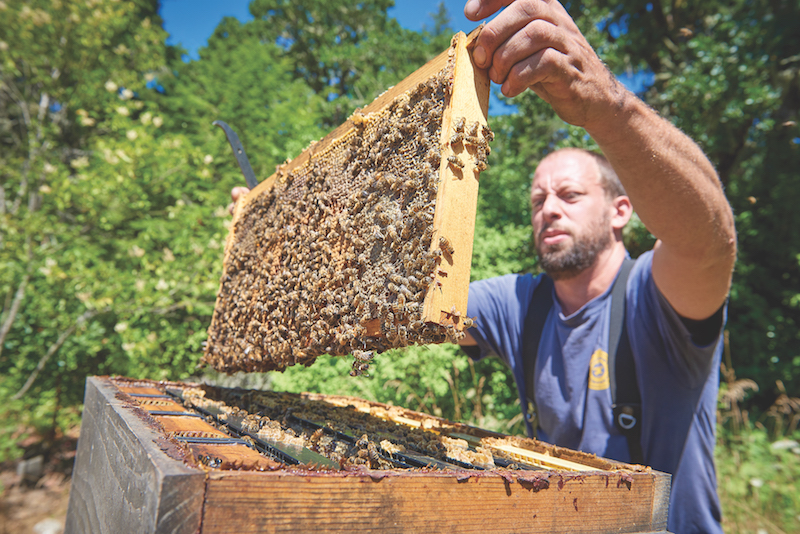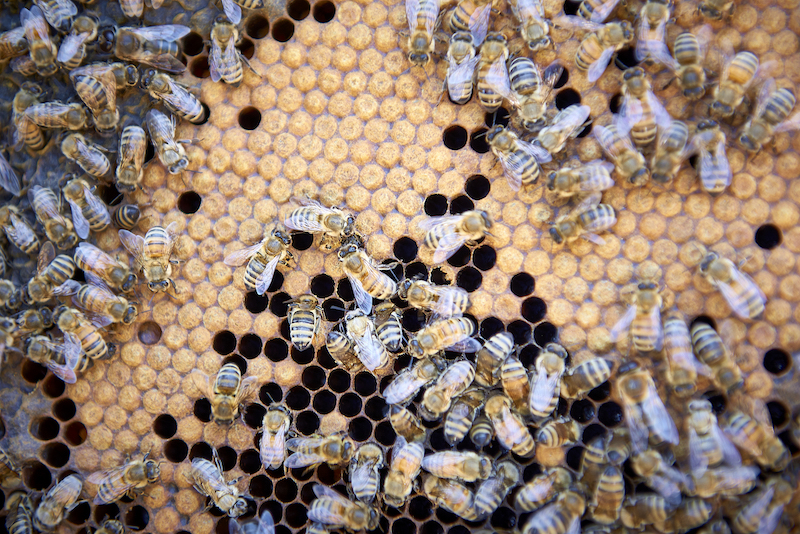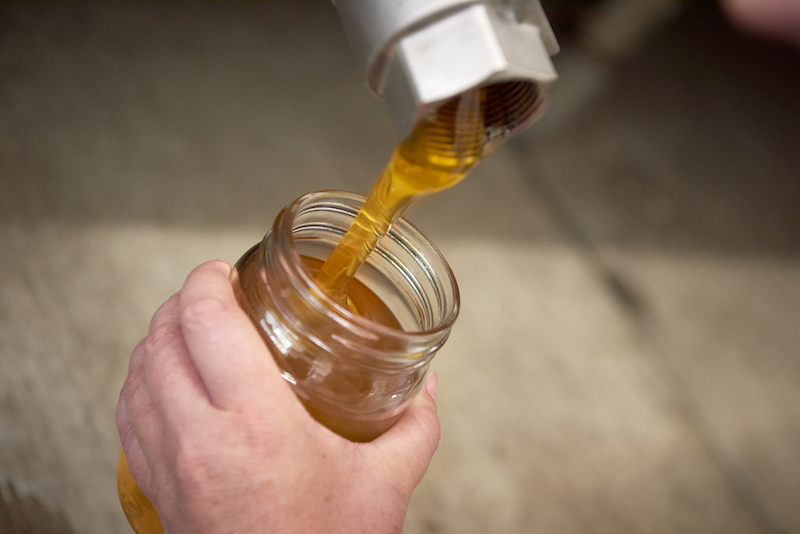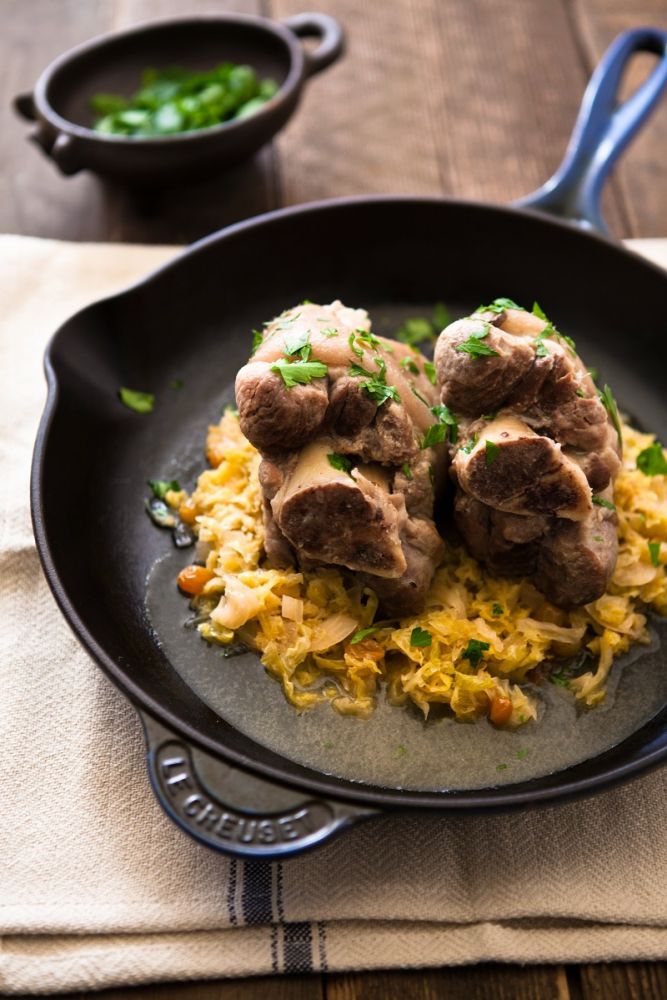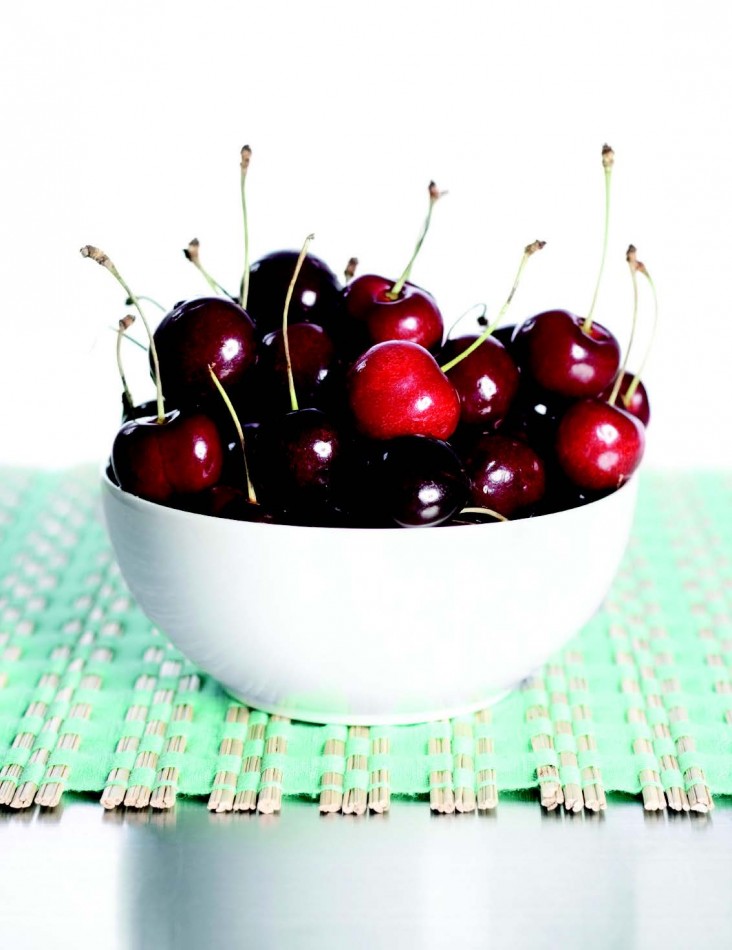Nectar of the Gods: Old Blue Raw Honey comes in many (nuanced) flavors
written by Sophia McDonald | photography by Bill Purcell
The jars of thick liquid sitting on Old Blue Raw Honey’s table at the Corvallis Farmers Market ranged in color from spun gold to dark amber. As customers picked them up, company co-owner Camille Storch explained the hand-printed notes on the labels.
Storch and her husband, Henry, who has been keeping bees for about twelve years, pay careful attention to the nectar source available to each of their hives. Instead of mixing everything together when they bottle the honey, they keep each hive’s products separate so they can tell customers where the sweet liquid came from and what the bees were eating.
Why go to all this trouble? Just as an animal’s diet affects the flavor of its meat or soil influences a wine’s terroir, a bee’s food source can make an identifiable difference in the way honey looks and tastes. The Storches are dedicated to exposing discerning eaters to the nuanced flavors available in varietal honey.
Henry Storch worked as a farrier, native seed collector and habitat restoration consultant before becoming a full-time beekeeper. He sourced his bees from feral colonies found by friends who were logging in remote portions of the Oregon Coast Range. What he discovered—not surprisingly—was that bees that had adapted to local weather conditions and native flora produced a lot more honey. They would also fly in cooler conditions, which meant they could gather nectar from unusual sources, such as blooming bigleaf maple.
Breeding and selling Oregon bees has become an important part of Storch’s beekeeping practice, one that seems especially critical in the face of the many threats to the honeybee population. Their demise is not imminent, Storch said. Even though he expects to lose up to 40 percent of his hives every year, “a beekeeper with experience can split a hive four ways and still make a honey crop in the summer,” he said.
But the threat to bees is real and, like all dynamic natural systems, there is no easy solution. Storch described a combination of habitat loss, toxins, disease and other factors when talking about their decline. “Viruses and other problems are always mutating,” he said. “There are some solutions that we’re coming up with to try to build up viral resistance, but there’s also immune system suppression that’s due to synergy between different chemical compounds the bees come in contact with. Each of those compounds independently can have zero or low toxicity as far as the Environmental Protection Agency is concerned.”
As the chemicals combine and build up in the wax, they can gradually weaken or kill the colony. Many people point to the practice of trucking bees to California’s massive almond orchards as another threat. Storch’s hives make that journey annually in December or January, and he sees it as a mixed bag. It’s stressful for the insects, and it can expose them to pesticides and fungicides. That problem, however, has lessened thanks to pressure from conscientious beekeepers. Storch said he always reserves the right to cancel any pollination contract where the conditions are unacceptable.
“The Almond Board of California now has these grower recommendations that are very strict,” he said. “They know if the bees come out of the almonds worse than they came in, nobody’s going to show up.” The bees’ time in California also acts as kind of a warm-up period for their work in Oregon. By the time Storch brings the hives back in March, some of them will have stockpiled important resources, and their populations will be rebounding after the natural die-off that occurs in the winter. That means they can quickly jump into making honey and pollinating plants in the Willamette Valley. Some of Storch’s bees are placed in open spaces across Linn, Benton and Lincoln counties. They spend the next several months foraging in blackberry thickets and flower-filled meadows.
The Storches harvest the hives after each significant nectar flow—the timing of which Henry Storch knows well from his work with native plants—so they can isolate honey produced from poison oak and early-or late-season wildflowers. Other hives go to Willamette Valley farmers who need crops pollinated. That allows Old Blue Raw Honey to offer products labeled as raspberry, meadowfoam pumpkin, coriander or parsley and mint honey. “The bees will forage a little in the surrounding area, but usually they’ll focus on that one resource right in front of them, so it’s pretty clear what kind of varietal honey it is,” Camille Storch said. To make it easier for people to try the distinct types and compare their flavors, the Storches offer a quarterly subscription service.
Each box comes with three jars and typically includes a wildflower, blackberry and crop honey. Depending on the nectar source, eaters may detect notes of menthol and licorice, dried fruit, tobacco and leather, or sweet summer flowers. It’s a uniquely Oregon experience to be able to access so many honeys from such a small geographic area. “People will say to me all the time, ‘I collect honey from all over the world. I have ten different kinds of honey from Spain and New Zealand and wherever,’” Storch said. “And I say, ‘That’s cool, I have thirty-five different kinds of honey from within 40 miles of my house.’” This diversity is made possible by the fact that Willamette Valley farmers grow such a wide range of fruits, vegetables, herbs and seed crops. And it means that come winter, there may be no better way to indulge in Oregon’s bounty than by diving into a jar.
Once you’ve settled on a favorite honey variety (or a favorite variety for pairing with savory foods, anyway), use it at dinnertime by cooking pan-seared scallops from Ambrosia Restaurant and Bar, a Eugene eatery that combines the best of Italian and Pacific Northwest cuisine. Bacon and feta make the honey-laced sauce even more delicious.
End the meal with a Trinket Toddy from Gina Helvie, owner of Trinket Brunch and Spirits in Portland. The first step is to whip up a batch of what she calls “savory honey,” which is a mulled mixer made with vinegar, sparkling wine or cider, and spices. Add it to bourbon or brandy for a warm and wonderful winter treat.
Learn more about Old Blue Raw Honey.


